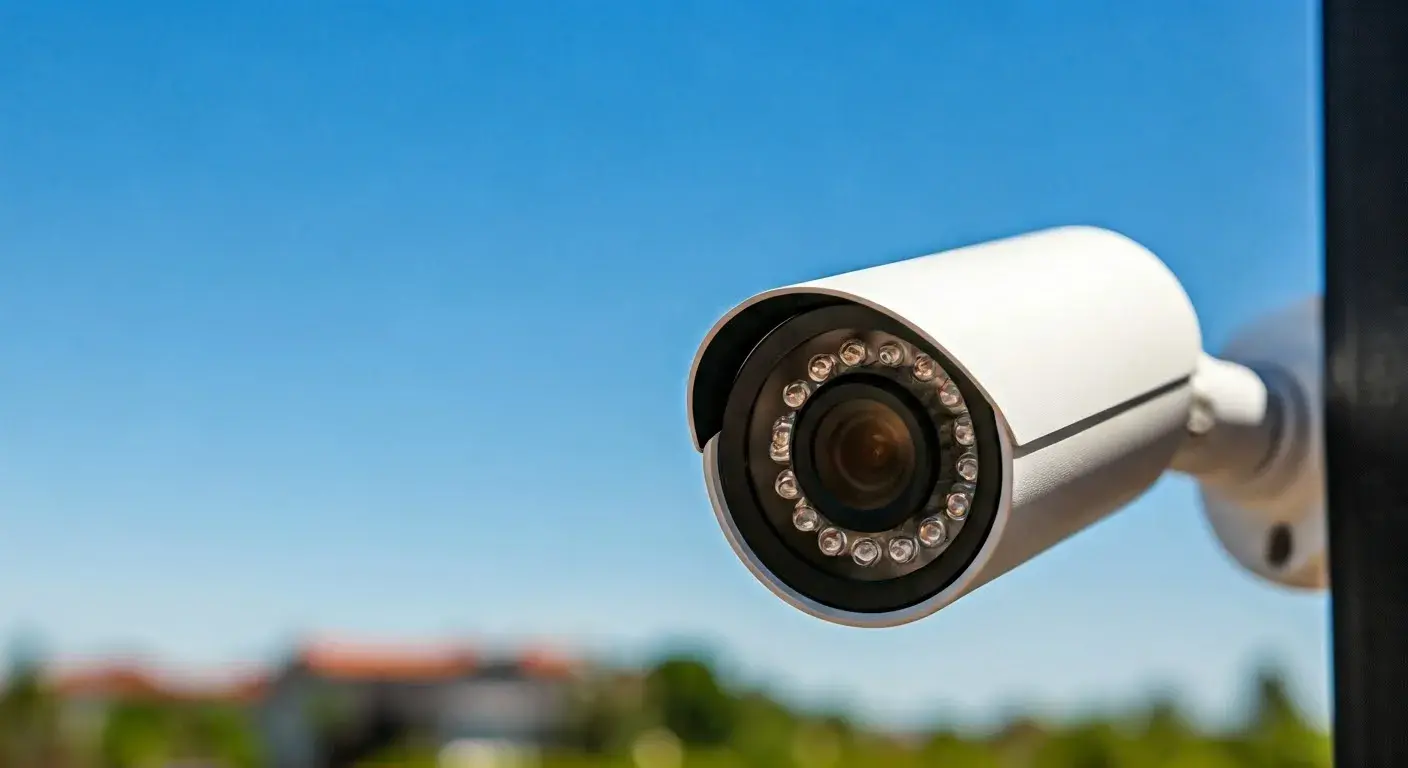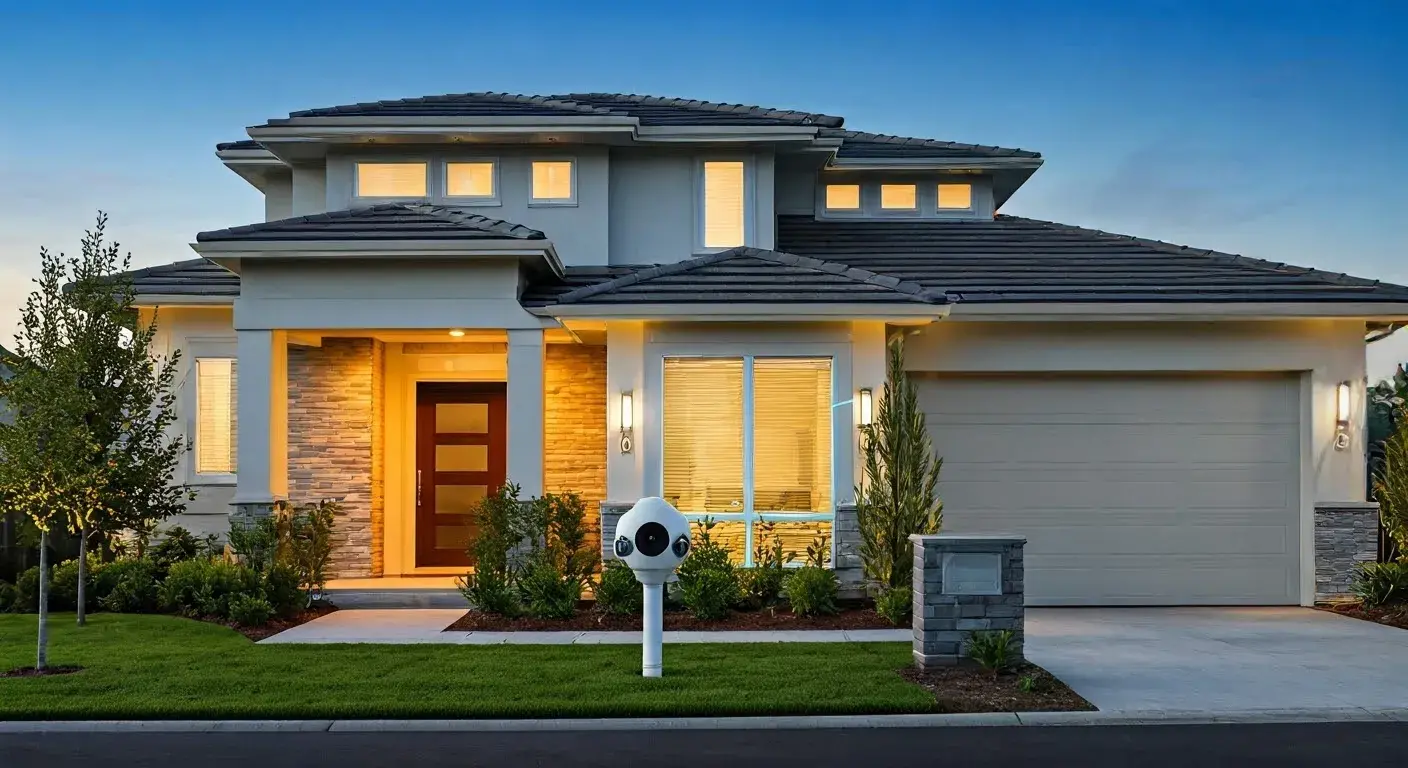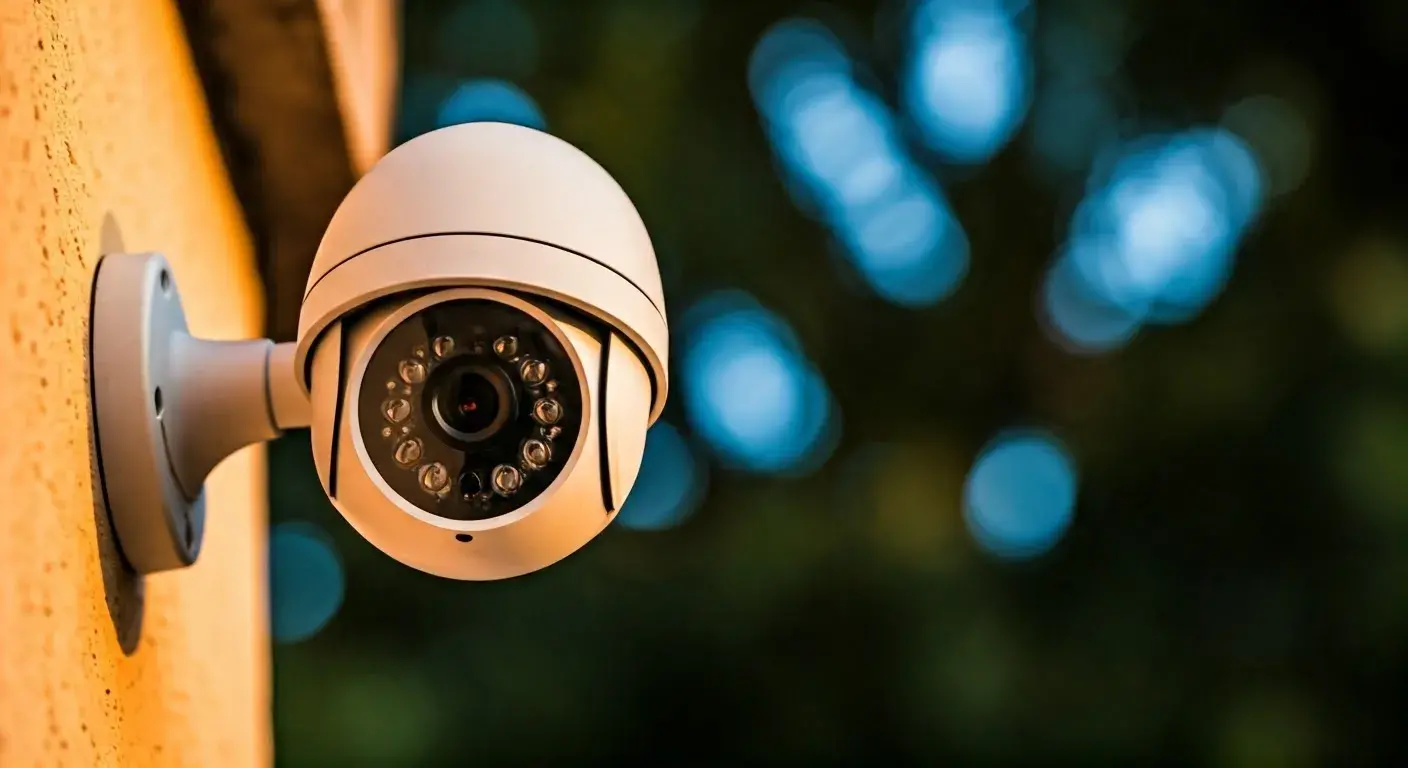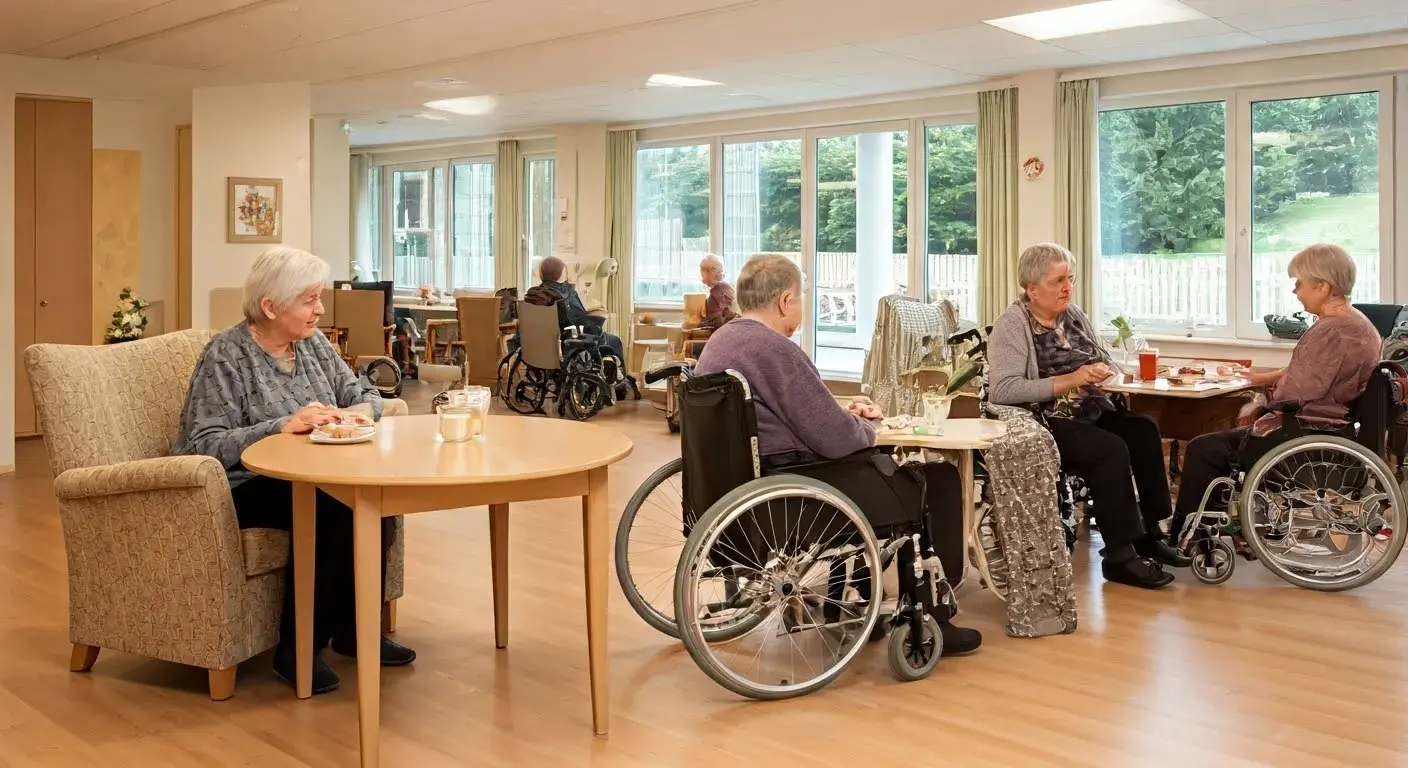WiFi cameras are very popular, but more people want home security cameras that work well without an internet connection. This need comes from different situations. For example, people may need to watch over remote places, want more privacy, or be ready for possible internet cuts. Luckily, there are new options out there that can meet these needs. These offer strong choices compared to regular WiFi cameras. Let's look at non-WiFi security cameras to help you make the best choice for your situation.
Understanding the Basics of Non-WiFi Security Cameras
Non-WiFi security cameras are a good choice for surveillance because they work without needing the internet. They do not depend on the cloud. Instead, they save videos in other ways, like using SD cards, hard drives, or digital video recorders (DVRs). This is especially helpful in places that have little or no internet access.
IP cameras are a common type of security camera that can also work without an internet connection. You can connect them to a PoE (Power over Ethernet) switch. By setting up port forwarding, you can see the camera's interface locally. However, you will not be able to do remote viewing or use other features that need the internet if there is no active internet connection.
The Technology Behind Cameras Without WiFi
Wireless cameras without WiFi use different ways to communicate. A common method is through cellular connectivity. These cameras use 3G, 4G, or 5G cellular networks, like smartphones. This allows them to send data and let you watch remotely through mobile apps. Usually, you need a SIM card with a data plan for these cameras.
Another way is using wired connections. This offers steady data transfer for security systems. Wired cameras connect straight to a storage device like a DVR or NVR with coaxial or Ethernet cables. The DVR or NVR acts as the main point for recording, storing, and playing back video.
Some cameras have local storage with SD cards or internal memory. This means you don’t need external storage or the internet to save videos. However, this reduces your ability to access footage remotely. You would need to go physically to get the recordings.
Benefits of Choosing a Non-WiFi Security Solution
One big plus of non-WiFi cameras is their increased privacy. These cameras don't send data over the Internet, which reduces the chance of unauthorized access or data breaches. This feature is very useful for people who want to keep their surveillance footage safe and offline.
Also, some non-WiFi cameras have long battery life because of their energy-saving designs. With the option for solar panels, these cameras can offer very long-lasting and eco-friendly surveillance. This is perfect for remote locations or places with less reliable power.
Some non-WiFi cameras work alone, while others allow remote control and viewing through special apps or cellular networks. This way, you can keep an eye on your property no matter where you are. You can get instant alerts and access live or recorded footage easily.
Types of Home Security Cameras That Don’t Require WiFi
Navigating the world of non-WiFi security cameras gives you many options. Each type has its strengths and weaknesses. When you know the differences, you can choose the best solution for your needs and likes.
Let’s look at the main types of cameras that work well without WiFi. We will discuss the features, benefits, and possible downsides of cellular security cameras and wired security systems with direct storage access. This information will help you make an informed decision.
Cellular Security Cameras: A Wireless Alternative
Cellular security cameras are a great way to keep an eye on places without traditional internet access. They use cellular networks like 3G, 4G, or 5G, just like smartphones do. To make them work, you need a SIM card with an active data plan.
Here are some key features of cellular security cameras:
- Wireless Flexibility: They don't need physical wires, so you can install them anywhere easily.
- Remote Viewing: You can check your property from almost anywhere with cellular coverage. Special apps let you see live video, watch recorded footage, and get instant alerts.
- Data Plan Considerations: Remember that costs for data plans will add to your monthly expenses, as the camera uses data.
Wired Security Systems with Direct Storage Access
Wired security systems with direct storage provide a reliable and secure option for continuous recording, devoid of internet dependence. These systems utilize either coaxial cables for analogue systems or Ethernet cables for digital IP cameras, transmitting video signals directly to a DVR or NVR.
How to Set Up Your Home Security Without Internet Connectivity
Setting up a strong home security system without the internet means using different methods based on the type of camera you pick. The way you install cellular cameras is different from wired systems, but both are designed to offer good surveillance when you are offline.
You can choose cellular cameras for wireless ease or go for wired systems that record all the time. Following clear steps makes it easy to set up and helps you feel secure, even without an internet connection.
Step-by-Step Installation of Cellular Cameras
Installing cellular cameras is simple and flexible. You can place them almost anywhere since they are wireless. First, find a good spot with strong cellular reception to ensure it works well. You can mount the camera on a wall or ceiling, or choose a freestanding style based on your needs.
Next, put a SIM card with an active data plan into the camera. Be sure to follow the manufacturer’s instructions. Many cellular cameras come with rechargeable batteries. Some models even have a solar panel, which helps them work longer. If you use a solar panel, connect it properly and place it in a sunny area for best charging.
Complete the setup by downloading the camera's dedicated app on your smartphone or tablet. Use the app to connect your camera, set it up the way you like, adjust motion detection, schedule recordings, and customize alerts just for you.
Configuring Wired Systems for Local Storage
For wired systems, start by connecting the cameras to the DVR or NVR using the right cables. Follow the wiring diagram that comes with the system. Make sure the DVR or NVR and cameras have a constant power supply. This is important for uninterrupted recording. If the hard drive isn't already inside the DVR or NVR, install a surveillance-grade one for local storage. The size of the hard drive affects how long recordings can be stored. Choose a size that meets your needs.
To access the DVR or NVR's interface, you usually need to connect a monitor to it. Set up your recording settings by naming the cameras, choosing their resolution, adjusting the frame rate, and selecting motion detection options.
You can connect the DVR/NVR to a router for remote viewing and to access more features later if you get internet access. However, it's important to set up local storage first. This ensures you can record continuously, even without an internet connection.
Optimal Locations for Installing Your Non-WiFi Cameras
When you decide where to put non-WiFi security cameras, think about areas that need more attention. Look at what the cameras can do, the light around them, and if anything might block the view. Placing the cameras wisely can help your security system work better. This way, you get important surveillance footage and cover your property well.
If you are watching over a remote cabin, keeping an eye on farm animals, or wanting more privacy in your home, check the entry points and busy areas. Also, look for places with valuable items. Finding these key spots helps your non-WiFi cameras see important events and stop possible security problems.
Securing the Perimeter: Outdoor and Entry Points
Outdoor security cameras are very important for protecting the outside of your home. They serve as the first defence against possible dangers. Make sure to place cameras at entry points like doors, windows, garages, and driveways. Focus on areas that are easy to access without permission. When choosing these cameras, look for ones that are tough, resistant to weather, and can see well at night.
If there is a lot of sunlight, solar-powered security cameras can be a great choice. These cameras use solar energy to charge their batteries. This helps reduce the need for regular power sources while keeping watch around the clock. Position the solar panel where it can catch the most sunlight during the day. This will keep the camera powered without interruption.
Also, remember to place cameras in blind spots, like corners, tight paths, or areas blocked by plants. Using a mix of wide-angle and narrow-angle cameras helps cover the whole outside of your property. This way, you can see important details from different angles.
Inside Your Home: Strategic Placement for Maximum Coverage
Inside your home, placing your non-WiFi security cameras in the right spots helps them work better. Make sure to put them in busy areas like hallways, stairwells, and common rooms. This way, you can see movement and stop any possible break-ins. It’s also a good idea to have cameras aimed at entry points like front doors, back doors, and garage entrances. This helps capture anyone coming in or going out.
For better security and peace of mind, install cameras in places with valuable items or private areas like home offices, nurseries, or places with limited access. Make sure the cameras can see these spots to cover as much area as possible and catch important details if something happens.
Even though non-WiFi cameras usually don’t allow real-time viewing, new cellular technology now lets you stream live video. If you need to see live footage, look into cellular cameras that provide this option. This way, you can keep an eye on your home's interior no matter where you are and respond quickly if there’s a problem.
Maintenance and Troubleshooting Common Issues
To keep your non-WiFi security system working well and lasting a long time, you need to do regular maintenance and fix problems quickly. If you take care of things before they break and learn some simple troubleshooting steps, your cameras will last longer and work without any breaks.
It does not matter if you have battery-powered cameras that use cellular data or wired systems with local storage. Regular checks, cleaning, and updates for the software help your system work its best.
Keeping Your Cameras Operational: Routine Maintenance Tips
Regular maintenance is very important for the performance and lifespan of your non-WiFi security cameras. Check the cameras now and then for dirt, dust, or debris, especially if they are outside. Clean the camera lens and housing with a soft, dry cloth to keep image quality clear.
For battery-powered cameras, watch the battery life. Recharge or change the batteries when needed. If you have solar panels, make sure they are clean and have no obstructions blocking sunlight. A well-kept solar panel helps collect energy better, which extends battery life and keeps your camera working well.
For wired systems, routinely check the cable connections for any looseness or damage. Fasten the cables securely to avoid tripping and to keep the signal strong between the cameras and the DVR or NVR. If your DVR or NVR has a cooling fan, clean the fan vents often to avoid dust buildup. This keeps the device cool and helps prevent overheating.
Troubleshooting Connectivity and Storage Problems
Connectivity and storage problems can happen from time to time with your non-WiFi security system. If your cellular cameras have connection issues, check the signal strength first. Make sure the SIM card has an active data plan. If the signal is still weak, try moving the camera closer to a window or another spot with better reception.
If you can’t access recorded footage on a wired system, check that the DVR or NVR has enough storage space and the hard drive is working well. If the hard drive is broken or full, you should replace it with a new one to keep recording. For cameras using memory cards for local storage, make sure the card is in correctly and it has enough space.
Although non-WiFi cameras mainly use local storage, some models offer optional cloud storage as a backup. If you use cloud storage, fix any connection issues by checking for a stable internet connection for your device or network. Also, double-check your login details for the cloud service.
Conclusion
Choosing non-WiFi home security cameras is a smart way to protect your property without needing the internet. It’s important to know how these cameras work, their benefits, and the different types available. This understanding can help make your security stronger. With careful installation and upkeep, these cameras can cover all areas of your home, both inside and outside. Regular checks and maintenance will help keep your system running well. Picking the right non-WiFi security option can give you peace of mind and keep your home safe. If you care about privacy and want a reliable security setup, look into the different non-WiFi home security cameras that are out there.






